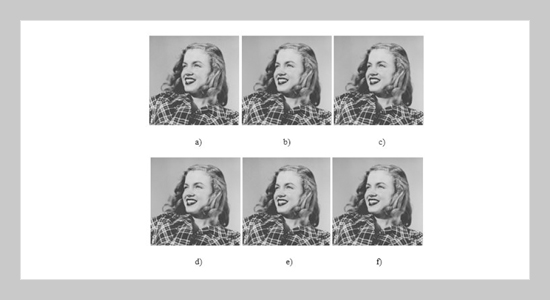REFERENCES
- [1] Liu, Z. S., Y. J. Li, S. Y. Tang, D. M. Wang, S. W. Jiang, and C. F. Jiang (2017) Cementing high temperature deep well Antan-1X with narrow annular spaces, Drilling Fluid & Completion Fluid 34(4), 90-95. doi: 10.3969/j.issn.1001-5620.2017.04.017
- [2] Du, J. H., H. Q. He, X. Z. Zhao, Y. M. Zhang, Q. Wang, R. F. Zhang, F. X. Hou, C. Y. Han, and B. D. Fan (2017) Significant exploration breakthrough in Yangshuiwu ultra-deep and ultra-high temperature Ordovician buried-hill in Langgu Sag, Bohai Bay Basin, China Petroleum Exploration 22(2), 1-12. doi: 10.3969/j.issn.1672-7703.2017.02.001
- [3] Zhang, Y. M., Y. J. Li, S. Q. Cui, H. B. Tang, Z. X. Li, and D. M. Wang (2018) Key wellbore technologies for the exploration breakthrough of high-temperature oil and gas reservoirs in Yangshuiwu buried hill, Oil Drilling & Production Technology 40(1), 20-26. doi: 10.13639/j.odpt.2018.01.004
- [4] Liu, S. R., X. D. Cheng, Z. J. Zhao, L. Li, J. H. Li, and J. Y. Chen (2017) Optimization of test and perforation combination technology in Yangshuiwu high-temperature buried hill gas reservoir, Oil Drilling & Production Technology 40(2), 185-189. doi: 10.13639/j.odpt.2018.02.007
- [5] Chi, X. Y., and W. F. Sun (2010) Ordovician Sequence Paleogeography and Reservoir Quality in Jizhong Depression, Marine Geology Frontiers 27(3), 11-16. doi: 10.16028/j.1009-2722.2011.03.003
- [6] Yousefi, S. H., A. Eslamian, and F. Rashidi (2014) Investigation of well test behavior in gas condensate reservoir using single-phase pseudo-pressure function, Korean Journal of Chemical Engineering 31(1), 20-28. doi: 10.1007/s11814-013-0194-5
- [7] Jones, J. R., and R. Raghavan (1988) Interpretation of flowing well response in gascondensate wells, SPE Formation Evaluation 3(3), 578-312. doi: 10.2118/14204-PA
- [8] Gringarten, A. C., A. Al-Lamki, S. Daungkaew, R. Mott, and T. M. Whittle (2000) Well test analysis in gas-condensate reservoirs, SPE Annual Technical Conference and Exhibition, 1-4 October, Dallas, Texas, SPE-62920-MS. doi: 10.2118/62920-MS
- [9] Hashemi, A., L. Nicolas, and A. C. Gringarten (2006) Well test analysis of horizontal wells in gas-condensate reservoirs, SPE Reservoir Evaluation & Engineering 9(1), 86-99. doi: 10.2118/89905-PA
- [10] Tang, E. G., S. J. Cheng, and X. F. Li (2002) The application of compound model to the well test interpretation in condensate gas reservoir, Well Testing 11(6), 8-10. doi: 10.3969/j.issn.1004-4388.2002.06.003
- [11] Liu, Y. W., J. L. Liu, W. Zheng, and Y. M. Wu (1999) A study of depression on pressure derivative of well testing curve from condensate gas wells, Well Testing 8(1), 6-9. doi:10.3969/j.issn.1004-4388.1999.01.002
- [12] Fu, Y., H. Q. Huang, J. X. Chen (2008) Well testing analysis for gas-condensate well considering well bore accumulated liquid, Well Testing 17(1), 1-3, 8. doi: 10.3969/j.issn.1004-4388.2008.01.001
- [13] Safari-Beidokhti, M. and A. J. Hashemi (2016) Condensate blockage effects in well test analysis of dual-porosity/dual-permeability, naturally fractured gas condensate reservoirs: a simulation approach, Journal of Petroleum Exploration and Production Technology 6(4), 729-742. doi: 10.1007/s13202-015-0214-6
- [14] Wang, T. X., Z. Q. Zhu, R. Y. Li, X. Feng, and G. Tang (2006) A technological study of well testing for high pressure condensate gas reservoir, Natural Gas Geoscience 17(3), 285-291. doi: 10.3969/j.issn.1672-1926.2006.03.001
- [15] Zhu, G. Y., H. J. Yang, B. Zhang, J. Su, L. Chen, Y. H. Lu, and X. W. Liu (2012) The geological feature and origin of Dina 2 large gas field in Kuqa Depression, Tarim Basin, Acta Petrologica Sinica 28(8), 2479-2492.
- [16] Azari, M., G. Hashmi, F. Hamza, and H. Tahani (2020) Well-testing, in-situ fluid sampling, and stress determination methods for unconventional reservoirs, International Petroleum Technology Conference, 13-15 January, Dhahran, Kingdom of Saudi Arabia, IPTC-19578-MS. doi: 10.2523/IPTC-19578-MS
- [17] Raghavan, R., and J. R. Jones (1996) Depletion performance of gas-condensate reservoirs, Journal of Petroleum Technology 48(8), 725-731. doi: 10.2118/36352-JPT
- [18] Lu, J. L., H. Zhang, B. H. Chang, W. Cao, and H. D. Sun (2018) A new deliverability evaluation method of gas condensate wells in gas-liquid two-phase state, Natural Gas Industry 38(4), 111-116. doi: 10.3787/j.issn.1000-0976.2018.04.013
- [19] Xie, X., H. Lu, H. Deng, H. Yang, B. Teng, and H. A. Li (2019) Characterization of unique natural gas flow in fracture-vuggy carbonate reservoir: A case study on Dengying carbonate reservoir in China, Journal of Petroleum Science and Engineering 182, 106243. doi: 10.1016/j.petrol.2019.106243
- [20] Fuentes-Cruz, G., and P. P. Valko (2015) Revisiting the dual-porosity/dual-permeability modeling of unconventional reservoirs: the induced-interporosity flow field, SPE Journal 20(1), 125-141. doi: 10.2118/173895-PA
- [21] He, Y. M., X. C. Chen, Y. Zhang, and W. Yu (2017) Modeling interporosity flow functions and shape factors in low-permeability naturally fractured reservoir, Journal of Petroleum Science and Engineering 156, 110-117. doi: 10.1016/j.petrol.2017.05.006
- [22] Song, S., B. Shi, W. Yu, L. Ding, Y. Liu, W. Li, and J. Gong (2020) Study on the optimization of hydrate management strategies in deepwater gas well testing operations, Journal of Energy Resources Technology 142(3), 033002. doi: 10.1115/1.4045168
- [23] Luo, E. H., Z. F. Fan, Y. L. Hu, L. Zhao, H. Y. Zhao, J. J. Wang, C. G. He, and X. Zeng (2019) A dual-porosity dual-permeability model for acid gas injection process evaluation in hydrogen-carbonate reservoirs, International Journal of Hydrogen Energy 44(46), 25169-25179. doi: 10.1016/j.ijhydene.2019.03.147
















